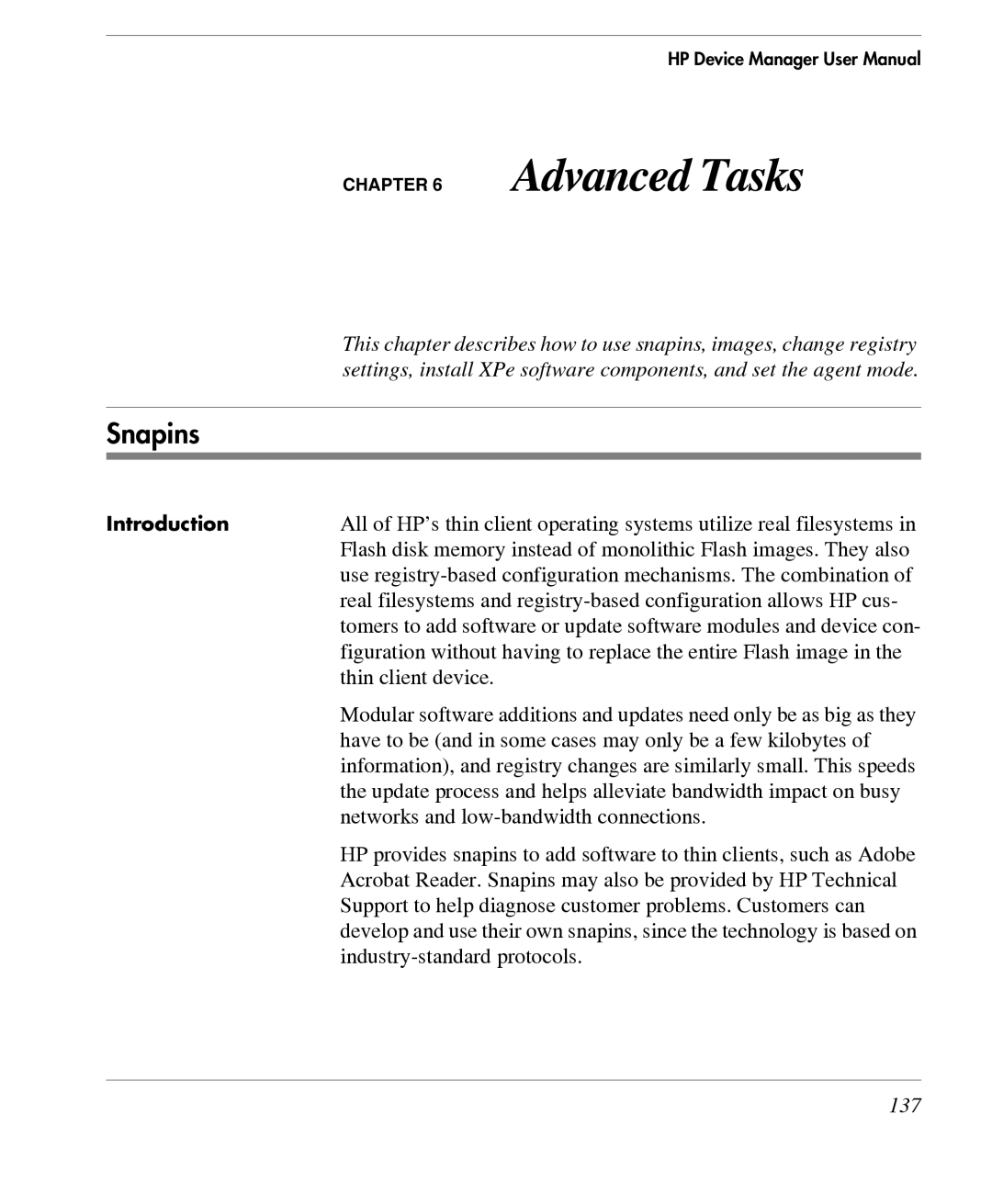
HP Device Manager User Manual
CHAPTER 6 Advanced Tasks
| This chapter describes how to use snapins, images, change registry |
| settings, install XPe software components, and set the agent mode. |
|
|
Snapins |
|
|
|
|
|
Introduction | All of HP’s thin client operating systems utilize real filesystems in |
| Flash disk memory instead of monolithic Flash images. They also |
| use |
| real filesystems and |
| tomers to add software or update software modules and device con- |
| figuration without having to replace the entire Flash image in the |
| thin client device. |
| Modular software additions and updates need only be as big as they |
| have to be (and in some cases may only be a few kilobytes of |
| information), and registry changes are similarly small. This speeds |
| the update process and helps alleviate bandwidth impact on busy |
| networks and |
| HP provides snapins to add software to thin clients, such as Adobe |
| Acrobat Reader. Snapins may also be provided by HP Technical |
| Support to help diagnose customer problems. Customers can |
| develop and use their own snapins, since the technology is based on |
|
